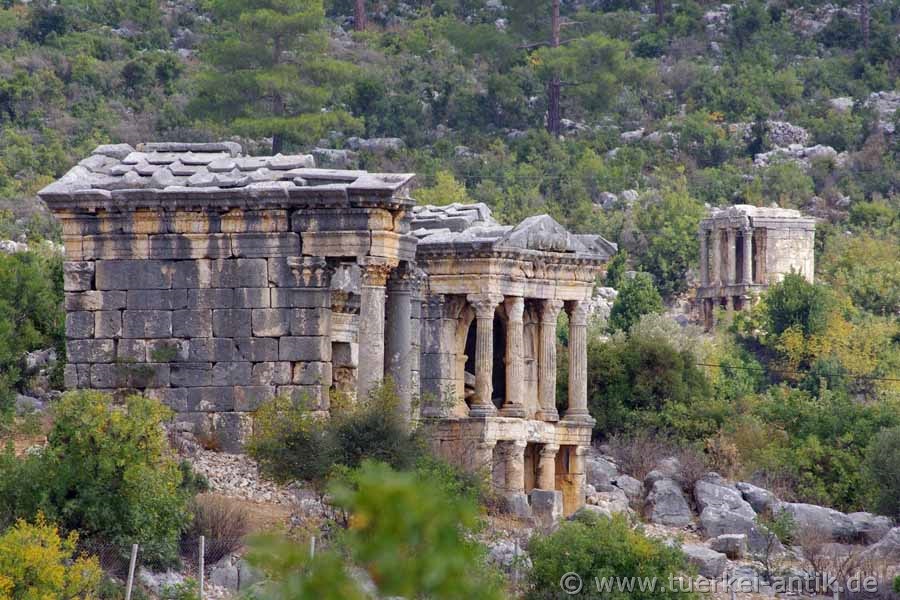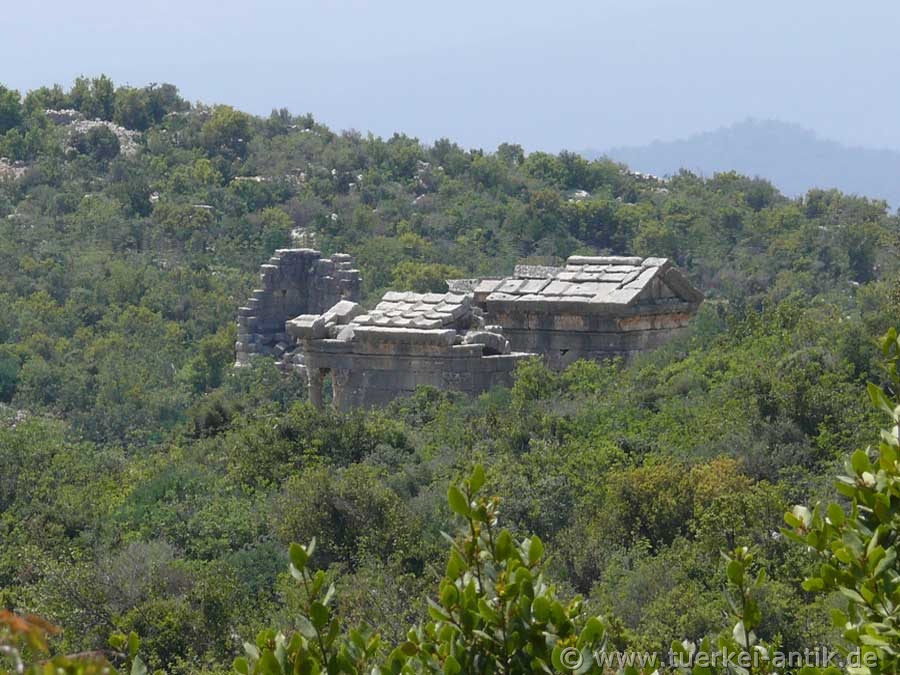 |
| Imbriogon (Demircili) in Cilicia | |||
 |
|
||
| Temple tombs | |||
|
According to tradition, Imbriogon originated in the 2nd/3rd century AD. Rich citizens of Seleukeia (Silifke) had retreated here before the summer heat and preferred to be buried here. Some magnificent temple tombs have been preserved. There are no remains from Christian times. It seems that the place was left early in favour of another place. The reasons for this are unknown. |
|||
|
|
|||
|
The "upper" temple grave |
|||
|
Most of the seven house and temple tombs have survived, all dating back to the second and third centuries. They are partly two-storey and up to 7.5 m high. |
|||
|
|
|||
| Temple tombs | |||
|
Near the village well, the double temple grave is not to be overlooked. Both buildings stand close together and are also facing south. The right tomb is two-storeyed, 4 x 4 m in floor plan and 7.5 m high. The basement has 2.3 m high columns with ionic capitals, while the 2.9 m high upper floor is decorated with Corinthian capitals. Three sarcophagi are still preserved inside. The lower burial chamber was hewn out of the rock. |
|||
 |
|||
| Temple tombs | |||
|
The terrain is very rough and difficult to explore. To visit the old town of Imbriogon, a path at the foot of the Acropolis leads between two farmhouses to a Roman bath. The preserved 3 x 3 meter floor mosaic shows the water god Nereide. On the threshold of this room you can read a Greek inscription. Climbing further up the hill to the Acropolis, past cisterns and the remains of buildings, one comes across a large broken column with an inscription from the 2nd century A.D. According to the inscription, the column originates from the heroon of the rich and important Anglus family. A second, similar heroon was found on the hilltop. The building has completely collapsed, but the individual parts are scattered around. If you descend the Acropolis Hill on the other side, you come across a damaged, unadorned sarcophagus. The lid's next to it. |
|||
|
|
|||
|
The "lower" temple grave |
|||
|
Back on the road to Silifke, the "lower" temple grave can be found at the sharp bend after the village. It is facing south and measures 5.3 x 4.25 m and is 6.25 m high. The tomb also dates back to the early years of the village. |
|||
| Photos: @chim, Андрей Мурашкин | |||
| Translation aid: www.DeepL.com/Translator | |||
| Source: Wikipedia and others | |||
|
|
|||

